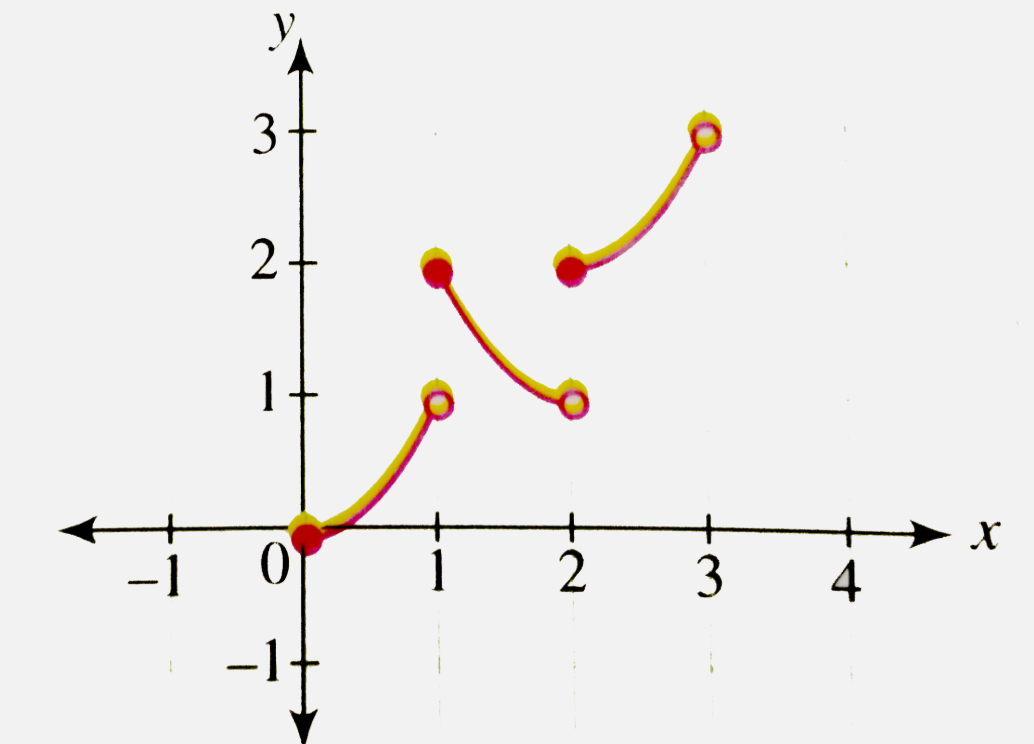Prove : (1+cot2A1+tan2A)=(1−cotA1−tanA)2=tan2A Solution in Tamil
From the graph , f'<0 for x∈(1,3)∪(5,6) where f decreases.
From the graph,f'>0 for x∈(0,1)∈(3,5) where f increases.
At x = 1 and x = 5, f' changes sign from '+' to '-', so it is the point of local maxima.
At x = 3, f'changes sign from '-' to '+' , so it is the point of local minima.
Slope of tangent to curve f' is '-' for x∈(0,2),i.e.f''<0.
Slope of tangent to curve f ' is '+' for x∈(2,4),i.e.f''>0.
That is , f'' changes sign at x = 2 with f''(2) = 0, so x = 2 is the point of inflection.
Further slope of the tangent to the curve f' is '-' for x∈(4,6),i.e.f''<0.
That is , f'' changes sign at x = 4 again f ''(4) = 0, so x = 4 is the point of inflection.
Topper's Solved these Questions
- GETTING STARTED WITH GRAPHSBOOK - CENGAGECHAPTER - GETTING STARTED WITH GRAPHSEXERCISE - Exercise
18 Videos
- FUNCTIONSBOOK - CENGAGECHAPTER - FUNCTIONSEXERCISE - Question Bank
21 Videos
- GRAPH OF INVERSE TRIGONOMETRIC FUNCTIONSBOOK - CENGAGECHAPTER - GRAPH OF INVERSE TRIGONOMETRIC FUNCTIONSEXERCISE - Exercise
18 Videos
Similar Questions
Does the following graph pass the vertical or horizontal line test ?

View SolutionIf there are four distinct real numbers satisfying thẻ equation ∣∣x2−4x−7∣∣=n, then number of integers in the range of n is
View SolutionDraw the graph of y=tan−1x+cot−1x
View Solutionsin+tan2A1+cot2A=(1−tanA1−cotA)2=tan2A.
View Solutionसर्वसमिकाओ को सिद्ध करो:
tanA1−cotA+cotA1−tanA=1+tanA+cotA=1+secAcosecA
View Solutionसिद्ध कीजिए : 1+tan2A1+cot2A=(1−tanA1−cotA)2
View Solutionसिध्द कीजिए कि [1+tanA1+cotA]2=tan2A.
View Solutionसिद्ध करे कि
tan−1(12tan2A)+tan−1(cotA)+tan−1(cot3A)=0 जबकि π4<A<π2
View SolutionProve that:
tanA(1+tan2A)2+cotA(1+cot2A)2=sinAcosA.
View Solutionसिद्ध कीजिए -
(1+tan2A1+cot2A)=(1−tanA1−cotA)2=tan2A.
View Solution1+tanA tanA2=tanA.cotA2−1=secA.
View Solutionसिद्ध कीजिए कि (1−tanA1−cotA)2=tan2A
View SolutionShow that (1+tan2A1+cot2A)=(1−tanA1−cotA)2=tan2A
View SolutionProve: tanA(1+tan2A)2+cotA(1+cot2A)2=sinAcosA
View SolutionProve: tanA(1+tan2A)2+cotA(1+cot2A)2=sinAcosA
View SolutionProve the following universal ((1+tan^(2)A)cotA)/(cosec^(2)A)=tanA
View Solution
